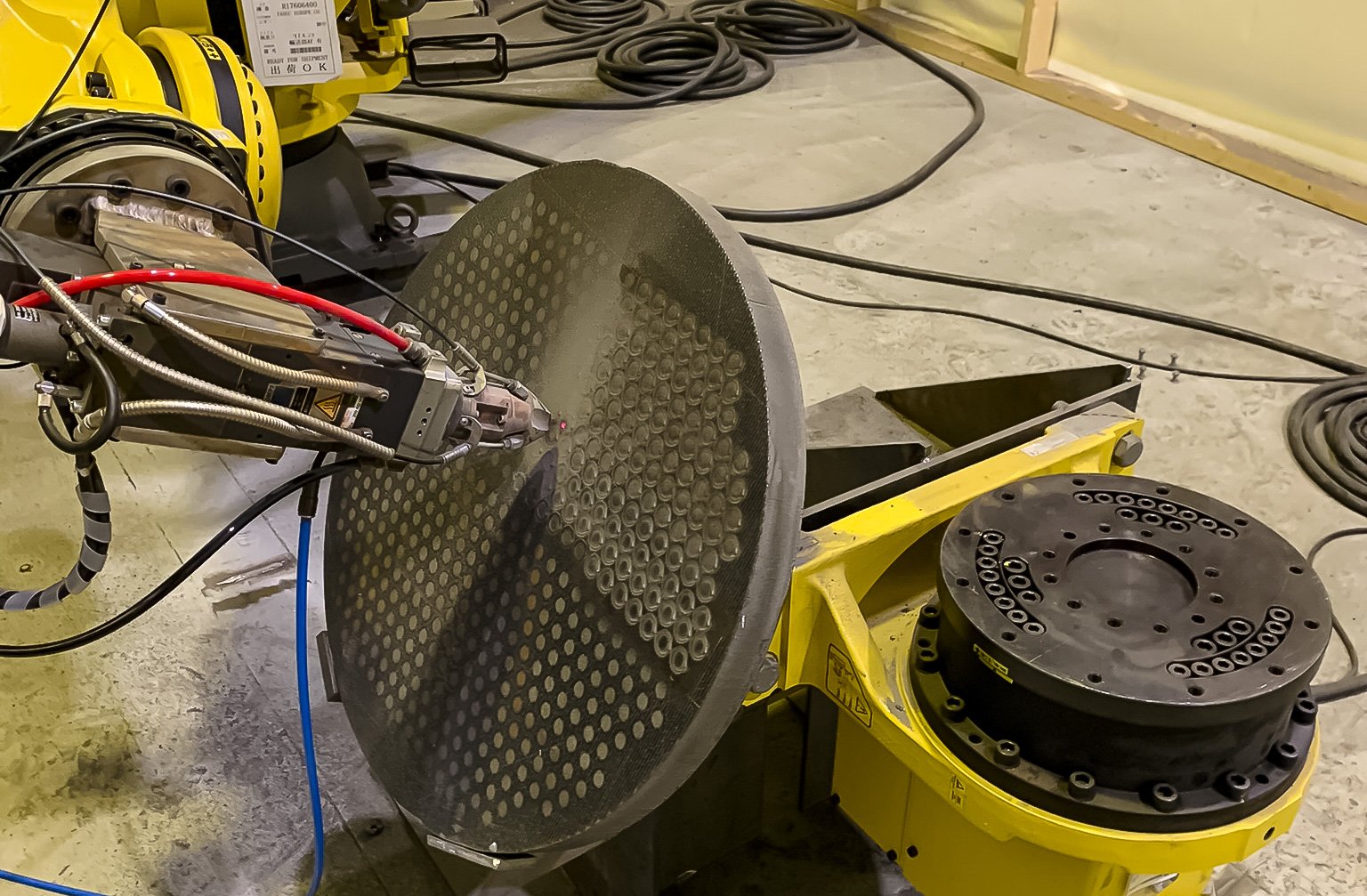Laser Metal Deposition
Laser metal deposition is a generative manufacturing method for metals. It is generally known as “laser metal deposition”, usually abbreviated to LMD, but can also be referred to as “direct metal deposition” (DMD) or “direct energy deposition” (DED).
Similar to traditional 3D printing, the LMD process utilizes heat to warm up and add a material to a component surface. The heat input in the process is light from a laser source, which creates a weld pool on the surface of the component. The added material is a metal powder that is automatically transported to the weld pool via a nozzle. Metal powder can be purchased in many different material qualities, depending on what use case or result the client requires.
The main usage area of LMD is not necessarily 3D printing complete components from scratch, but a rather diverse range of applications where only the imagination is the limit: repair of expensive components with high production cost, coating of structures with a protective layer against corrosion etc.
Coating & Surfacing
Surface treatment of steel materials is in most cases a necessity, to avoid degradation over time. Stainless and weathering steel is an alternative that can withstand the environmental impact, but these are more expensive than mild steel. Thermal spraying and painting is the traditional method for surface treatment, and while it being an effective way of protecting a material, it is a time consuming and health hazardous process.
Laser powder cladding or surfacing is a modern alternative to traditional surface treatment, where the laser beam creates a molten pool on the steel surface and a corrosion-resistant metal powder is applied. This results in a layer that is metallurgically connected to the base material, providing a pore- and crack-free coating of the steel surface.
Key advantages:
Automated, robotic process
Low exposure time and depth of laser (HAZ)
More resistant than thermal spray coating
Small to none post-processing of surface
Several different powder materials available
Additive Manufacturing
More and more components are manufactured from the ground-up in 3D printers utilizing an additive manufacturing approach, especially in polymer, nylon and composite materials. One of the big disadvantages of manufacturing components in a dedicated 3D printer is the space limitation of the build chamber. This limitation can be neglected by using robot-mounted LMD. The technology is not limited to vertical application either, which is the case with traditional 3D printers.
In the current setup, the LMD robot cell at Prodtex can produce components within a 3x3x1 meters bounding box, but this can be radically enlarged by mounting the robot on tracks.
Material layers, material type, weight, production time and thus price can be found before manufacturing through the use of digital twin and simulation software. Multi-material is also supported, which makes it possible to utilize inexpensive materials where needed, for example a mild carbon steel core with a stainless steel coating.



